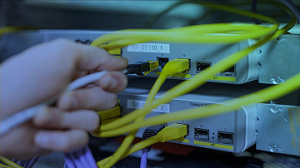Someone tries to imitate an existing company or person. To do so, they register a domain name that looks so similar to the original that they could be mistaken for each other.
A domain name that looks very similar to the original. The owners' motivation for registering and operating these domain names varies. For example, it could be a case of attempted fraud, where the attackers try to trick the victim into believing they are on the original site. In many cases, such domains are also registered in order to divert website visitors who mistype an address to advertising sites.
Specific measures
Preventive measures
Effects and risks
Further Information
- In the case of a phishing site or a site that spreads malware, report it to the NCSC. Such sites will be reported to the providers with the request to deactivate them.
- Contact the registry of the domain in question and make them aware of the problem. Each registry has a so-called abuse address (abuse@) to which such reports can be sent.
- The World Intellectual Property Organization (WIPO) Arbitration and Mediation Center offers fast and inexpensive dispute resolution procedures for domain names, thus avoiding the need to go to court. These services are based in particular on the «Uniform Domain Name Dispute Resolution Policy» (UDRP), which was created at the suggestion of WIPO. More information can be found on the WIPO website: https://www.wipo.int/amc/en/domains/index.html
- Seek legal advice
- Always check carefully that you are on the correct website before you submit any data.
- Loss of reputation
- Costs and time investment
- You can find further information on the WIPO website
https://www.wipo.int/amc/en/domains/index.html
Last modification 22.02.2021






























